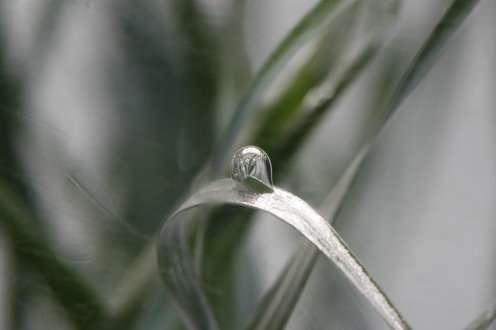Flood, drought and disease tolerant—one gene to rule them all

An international collaboration between researchers at the University of Copenhagen, Nagoya University and the University of Western Australia has resulted in a plant biology breakthrough. Since 2014, the researchers have worked on identifying the genetic background for the improved flood tolerance observed in rice, wheat and several natural wetland plants. In New Phytologist, the researchers describe the discovery of a single gene that controls the surface properties of rice, rendering the leaves superhydrophobic.
A gene called LGF1 controls the nanostructure of leaf surfaces. During flood events, the gene enables survival of submerged rice since the wax nanostructures retain a thin leaf gas film; hence the name of the gene, LGF1. The gas films facilitate gas exchange with the floodwater so that carbon dioxide can be taken up during the daytime in order to fuel underwater photosynthesis, and oxygen can be extracted at night.
The LGF1 gene also confers drought tolerance, since the tiny wax crystals reduce evaporation from the leaf surfaces, conserving tissue water.
Superhydrophobic surfaces retain a thin gas film underwater, which enables the stomata to function also during submergence. The stomata regulate the uptake of CO2 (carbon dioxide) for photosynthesis during the day, but also the uptake of O2 (oxygen) during darkness, enabling aerobic respiration. Without the protective layer of gas, the floodwater blocks the stomata and the gas exchange with the environment is greatly restricted; the plants are virtually drowning!
"We have used advanced microelectrodes both in controlled laboratory experiments and in the field situation to reveal the benefits of leaf gas films during submergence," says professor Ole Pedersen, Department of Biology, University of Copenhagen.
Long-term effects are still a puzzle
"We have assessed the importance of leaf gas films during submergence of rice, and in some situations, rice grows equally well above as well as below water - only because rice possesses the LGF1 gene," continues Ole Pedersen.
The implications of these findings are huge. Worldwide, climate change has already resulted in an increased number of floods, and in order to sustain food supply in a wetter future, the world needs climate-smart crops that better tolerate flooding.
"The superhydrophobic leaf properties that are coded by the LGF1 gene are, however, lost after a few days of submergence; the plants start drowning as the leaves become wet. Thus, our research now focuses on overexpression of the LGF1 gene. The overexpression should coat the leaves with more wax crystals and in this way prime the plants for a flood event. The fact that it is all controlled by just a single gene makes the goal much more realistic," concludes professor Ole Pedersen.
Journal information: New Phytologist
Provided by University of Copenhagen


















